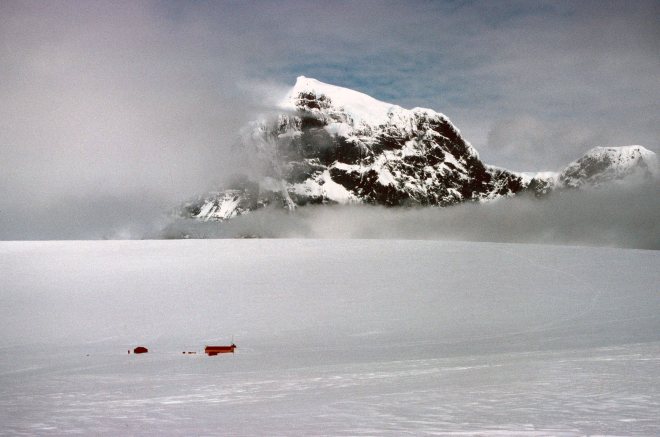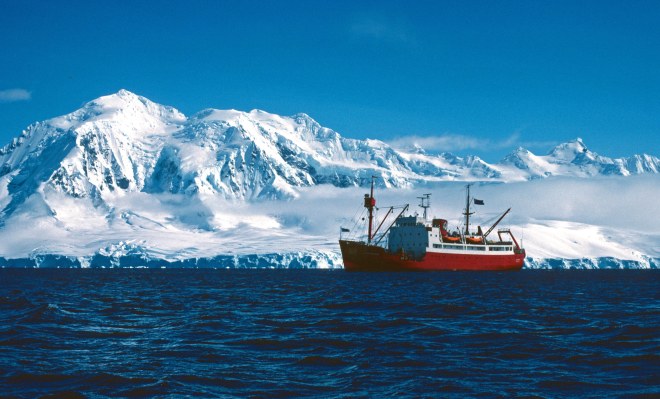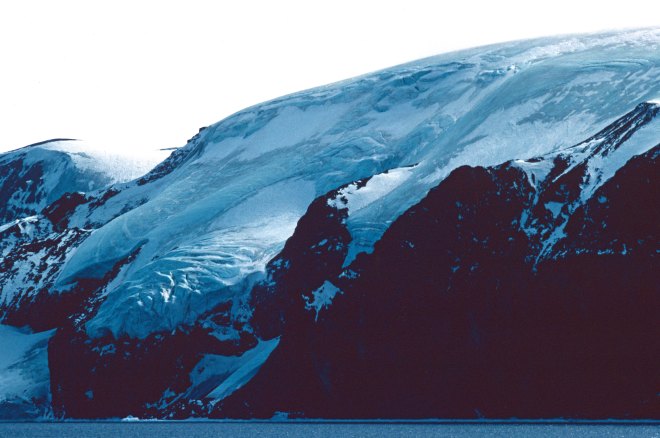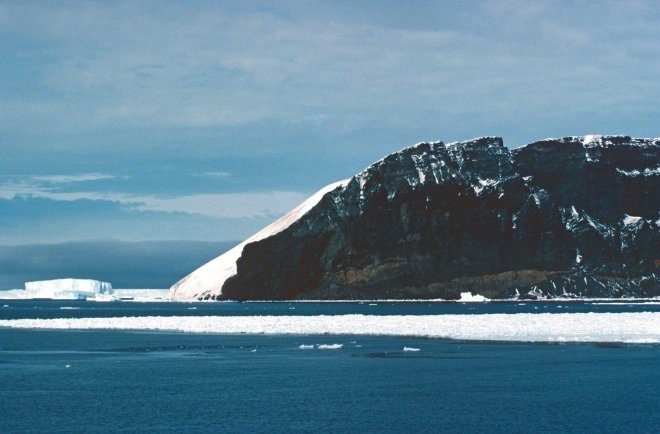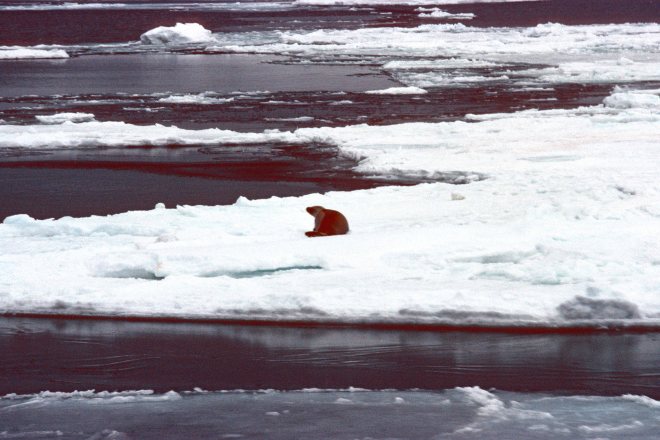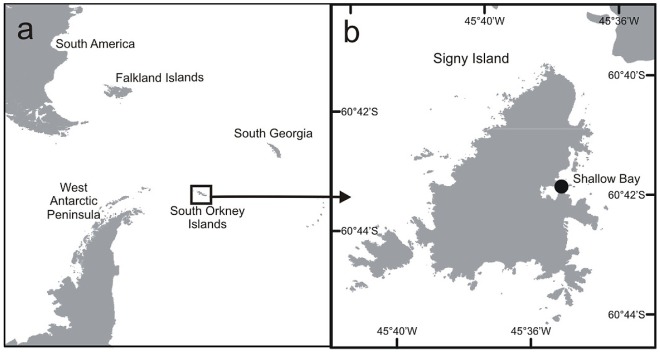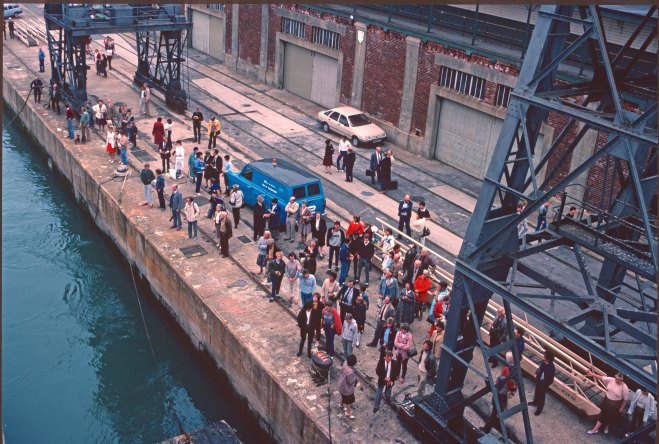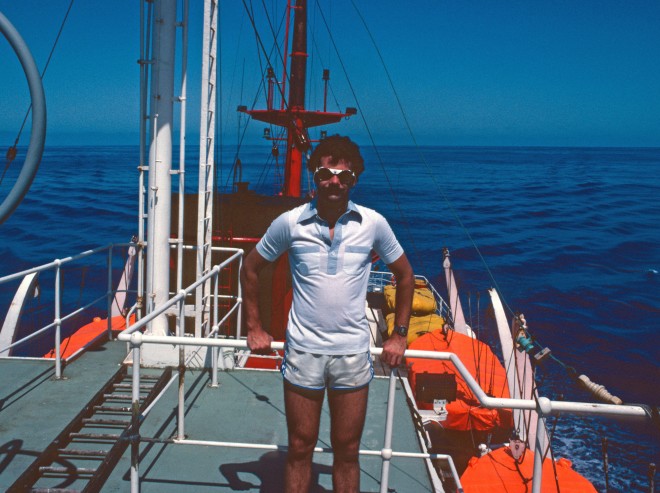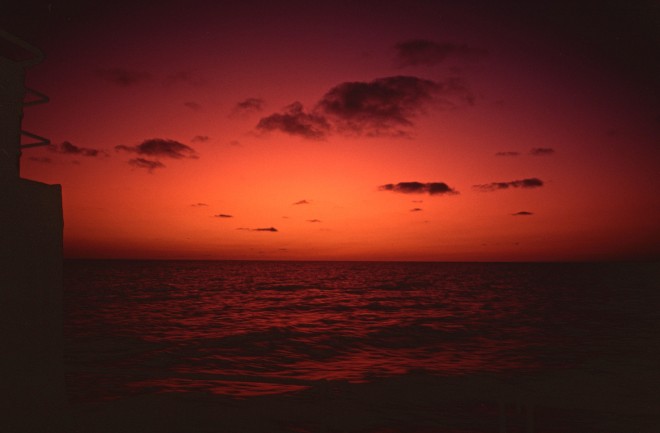
Bird Island lies off the north-west tip of South Georgia, (Lat. 54°0’0″S, Long. 38°2’59″W) (below).


There is a small research station – Bird Island Research Station – which is run by the British Antarctic Survey, and is ideally suited – being right in the middle of a huge fur seal colony! – to study the amazing wildlife present on this small island, which is only about 3 miles long.

According to Wikipedia (the figures may not be completely up-to-date) there are, on this small island:
- 65,000 Antarctic fur seals (around 1 for every 6 m2 (65 sq ft) of the island)
- 50,000 macaroni penguins
- 15,000 pairs of black-browed albatross
- 12,000 pairs of grey-headed albatross
- 1700 pairs of wandering albatross
- 500 pairs of southern giant petrels

We arrived on Bird Island on 1st Dec 1982, having previously sailed all the way up to Montevideo and back, on the RRS John Biscoe, to collect more personnel to take south. (N.B. it was not possible for civilians to fly via the Falkland Islands at the time). See previous blog here.

Although we had a limited time at this location, and the priority was to resupply the base (see below), I was very keen to get ashore and see some of the wildlife.

We all mucked in and helped with the unloading. Parcels and supplies were carried from the scow (above), up the beach and along a temporary plank walk (below) to the base.

Because we were walking through a breeding colony of Antarctic fur seals, the large, territorial males had to be temporarily walled off behind a row of oil drums, to dissuade them from sinking their teeth into our thighs!

The large males are very splendid fellows in the middle of their large harems (above).

Once we had finished unloading, some of us climbed up the nearby hill to photograph some of the Black-browed albatross (Thalassarche melanophris) which were nesting above the base (below).

We probably came too close to these birds than we should have done (below), but none of us had long lenses in those days!

I will include a few more recent pictures of these graceful birds (below) which some photographers have donated to the Creative Commons, meaning that they are licensed to copy and in any medium or format (CC BY-SA 2.0). Otherwise photographs are usually ‘All Rights Reserved’ and cannot be copied and reused without permission (and often with payment) from the photographer. I suspect that most people who cut and paste images off the internet are unaware of these rules; but that’s getting off the point. It is just great that some photographers allow their images to be used freely, like some shown in this blog.


Unfortunately, the Black-browed albatross population on Bird Island has been in a long-term decline in breeding numbers since the mid-1970s (see graph below). It shows how numbers of birds have declined markedly since I visited in 1982.

Tragically they are often “caught on fishing hooks (bycatch or incidental catch), by longline trawlers. Read more about this terrible crisis which is decimating albatross numbers, here and here.
Another majestic bird breeding on Bird Island is the Wandering Albatross (Diomedea exulans) (below).

There was a Wandering albatross chick wandering about the base, getting in the way of our unloading, which had to be persuaded to go elsewhere for the day!

The wandering albatross has the longest wingspan of any living bird, typically ranging from 2.51 to 3.5 m (8 ft 3 in to 11 ft 6 in).

Unfortunately, it’s the same tragic story again, with Wanderers declining in numbers between the mid 1990s and the mid 2000s (>4% per annum), although the rapid downturn appears to have stabilized, with numbers remaining relatively stable over the last 7-8 years, “albeit at a substantially reduced level compared with the number of breeding pairs present in the 1960s and with no signs yet of a recovery in numbers.” (See graph and reference below).


We can only hope that with more people visiting the Antarctic, and becoming aware of the fact that these magnificent creatures are getting caught up on fishing lines, or ingesting our plastic rubbish floating in the oceans, that more is done to say the thousands that are getting killed each year. Especially by illegal fishing: see here and here.

Useful links
https://friendofthesea.org/marine-conservation-projects-and-awareness/save-the-albatros/
https://www.birdlife.org/worldwide/news/living-albatross-bird-island-human-stars-part-one
https://community.rspb.org.uk/getinvolved/b/albatross-stories/posts/a-bit-about-bird-island
For previous blogs on this journey, see:
1) Journey to the Antarctic: 1) Southampton to the Falkland Islands (1982)
2) Journey to the Antarctic: James Ross Island (1982)
3) Journey to the Antarctic: The Antarctic Peninsula (1982)
References



